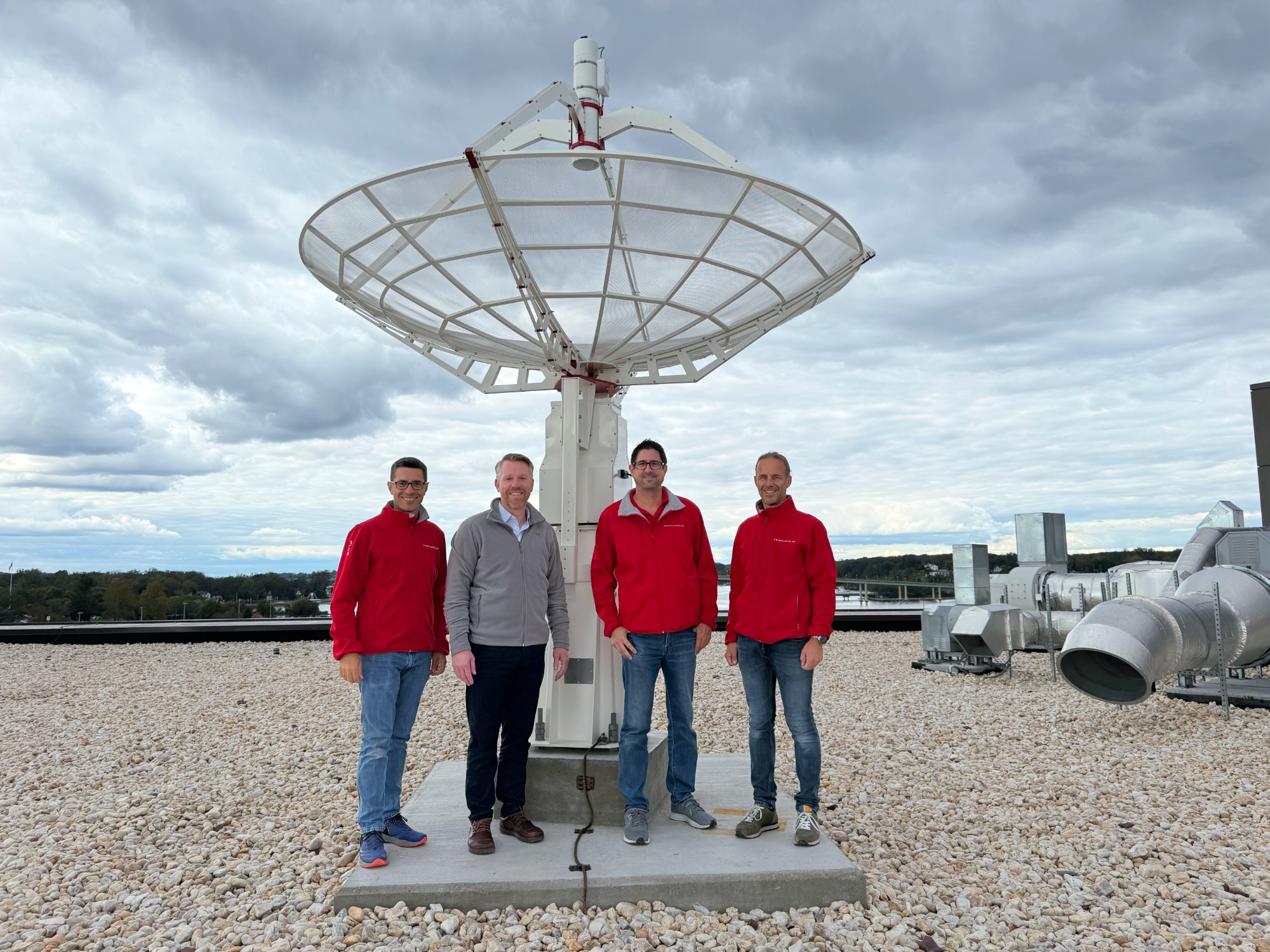SPIDER 300A radio telescope installed at the U.S. Naval Academy, Annapolis, MD (USA)
A new SPIDER 300A radio telescope for radio astronomy is now active on the roof of Physics Department of U.S. Naval Academy in Annapolis MD, USA! PrimaLuceLab Installation Team completed the installation of the 3 meter diameter parabolic antenna with tracking system. A receiver with backend and control computer have been installed in the Control Room located downstairs in the department to allow an easy remote control. Special attention has been taken to reduce possible radio frequency interferences thanks to the installation of the Radio-over-Fiber kit for SPIDER radio telescopes.
The SPIDER 300A mount and pier has been installed on a concrete base slab that has been prepared on the roof of Physics Department. The slab is connected to the control room in the department by a channel where we inserted the cables that are needed to operate the radio telescope: in this case we inserted the fiber optic cable to connect LNA units to the receiver and the power and data cable that is needed to operate the antenna tracking system.
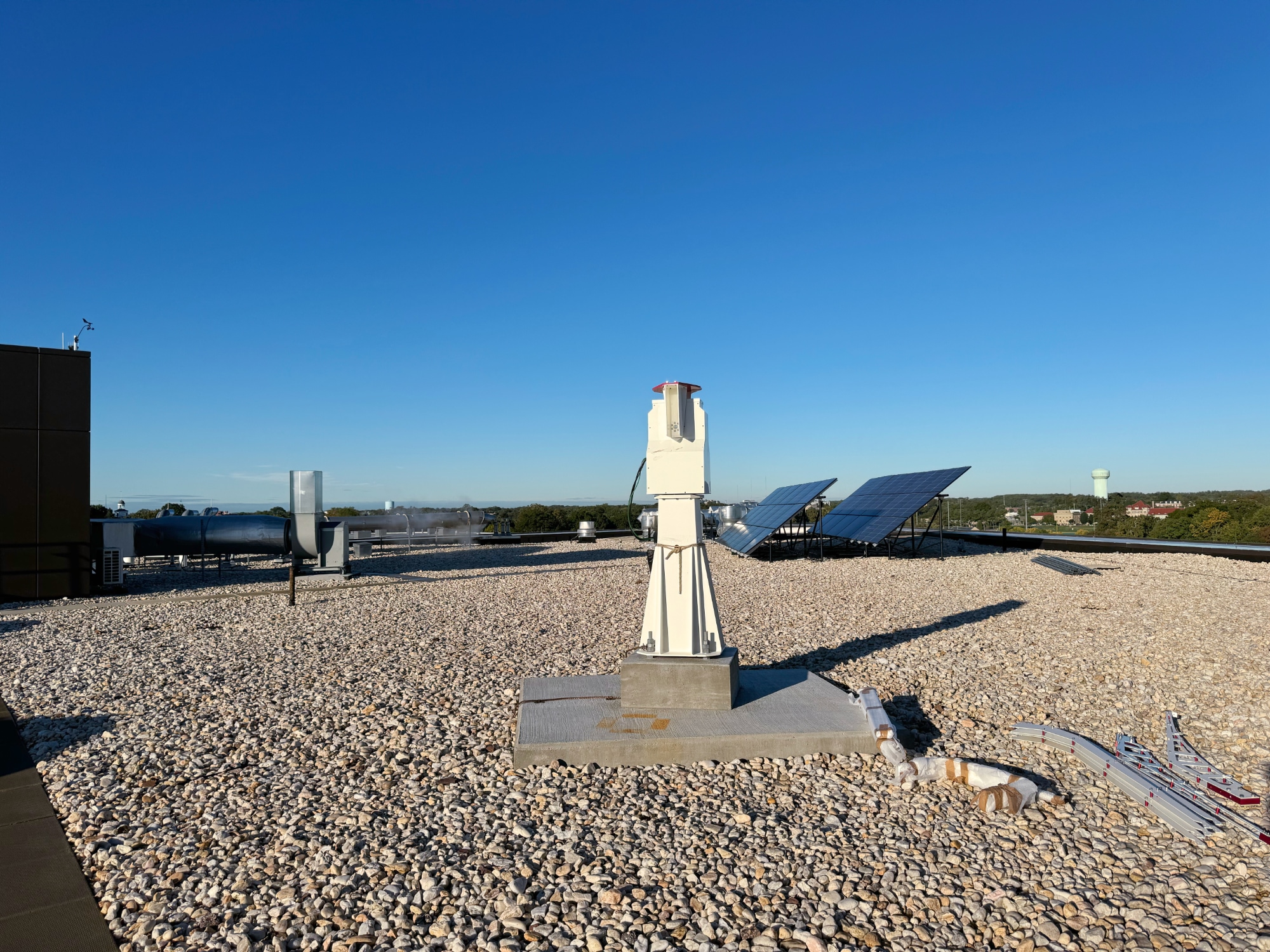
Next, PrimaLuceLab Installation Team assembled the 3-meter diameter parabolic antenna and connected it to the rear supports that has been specifically designed in order to provide the stiffness needed for a large antenna to support also windy conditions that we might expect from a installation located close to the ocean. Antenna assembly has been completed by adding front supports for the H-FEED that included also the optional radio-over-fiber kit converter.
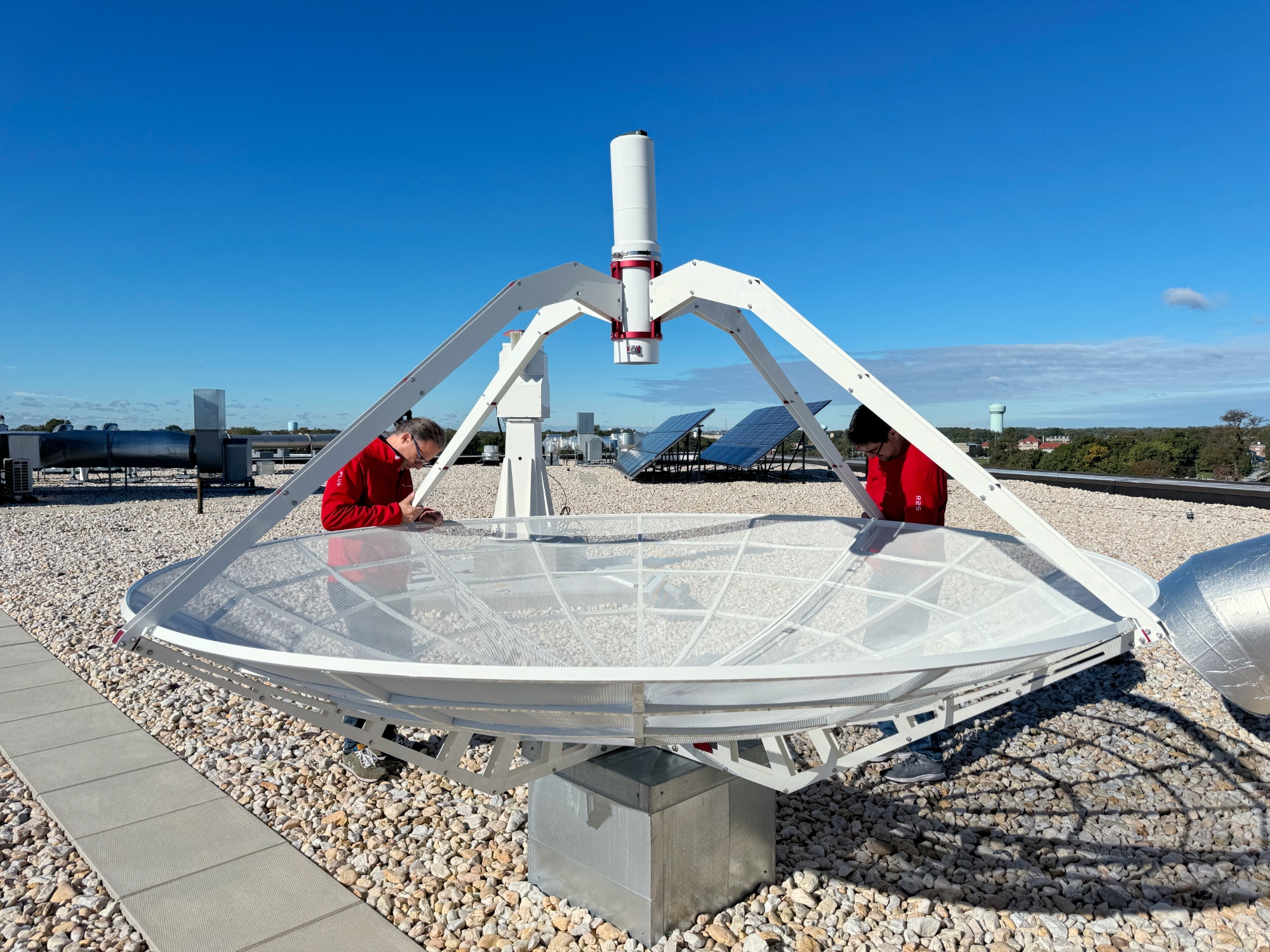
The antenna has been connected on top of the tracking system and fixed by using the many large screws. Connection plate has been designed in order to easily remove the entire antenna for safety in case of extreme weather conditions and the counterweight system includes also a hard stop connection for a security bar that, if inserted, mechanically locks the antenna in stow position (pointing the Zenith) in order to provide an even higher wind resistance level.
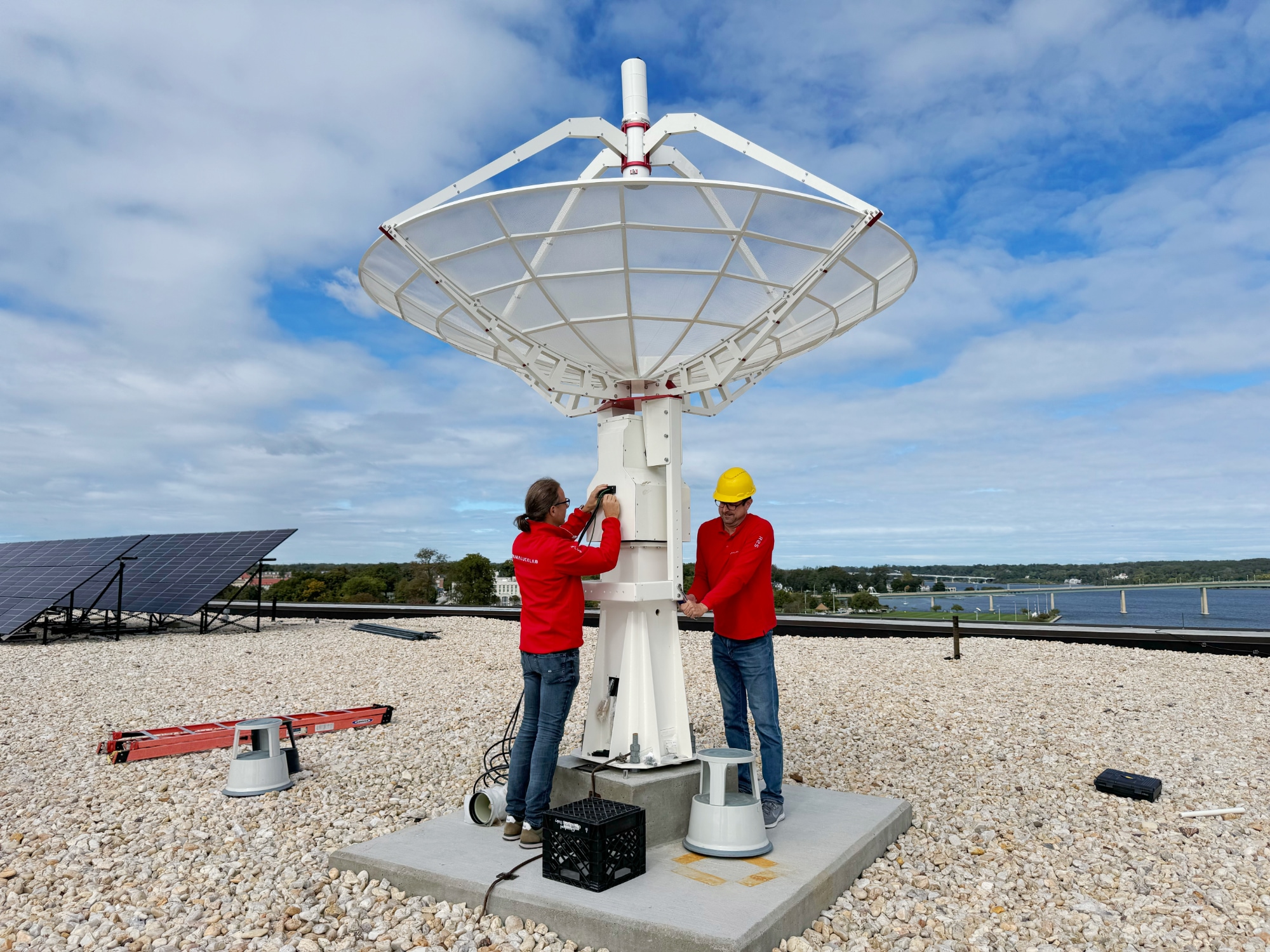
Then PrimaLuceLab Installation Team connected fiber optic cable to the LNAs and optical converter that are placed on top of the H-FEED. Fiber optic cable replaces standard coax cables: this improves system performance (by removing signal loss typical of standard coax cables) and minimise system sensitivity to RFA (radio frequency interferences) that was a very important fact to be considered in this installation since was on the roof and close to other electrical devices (like solar energy systems, AC inverters, etc).
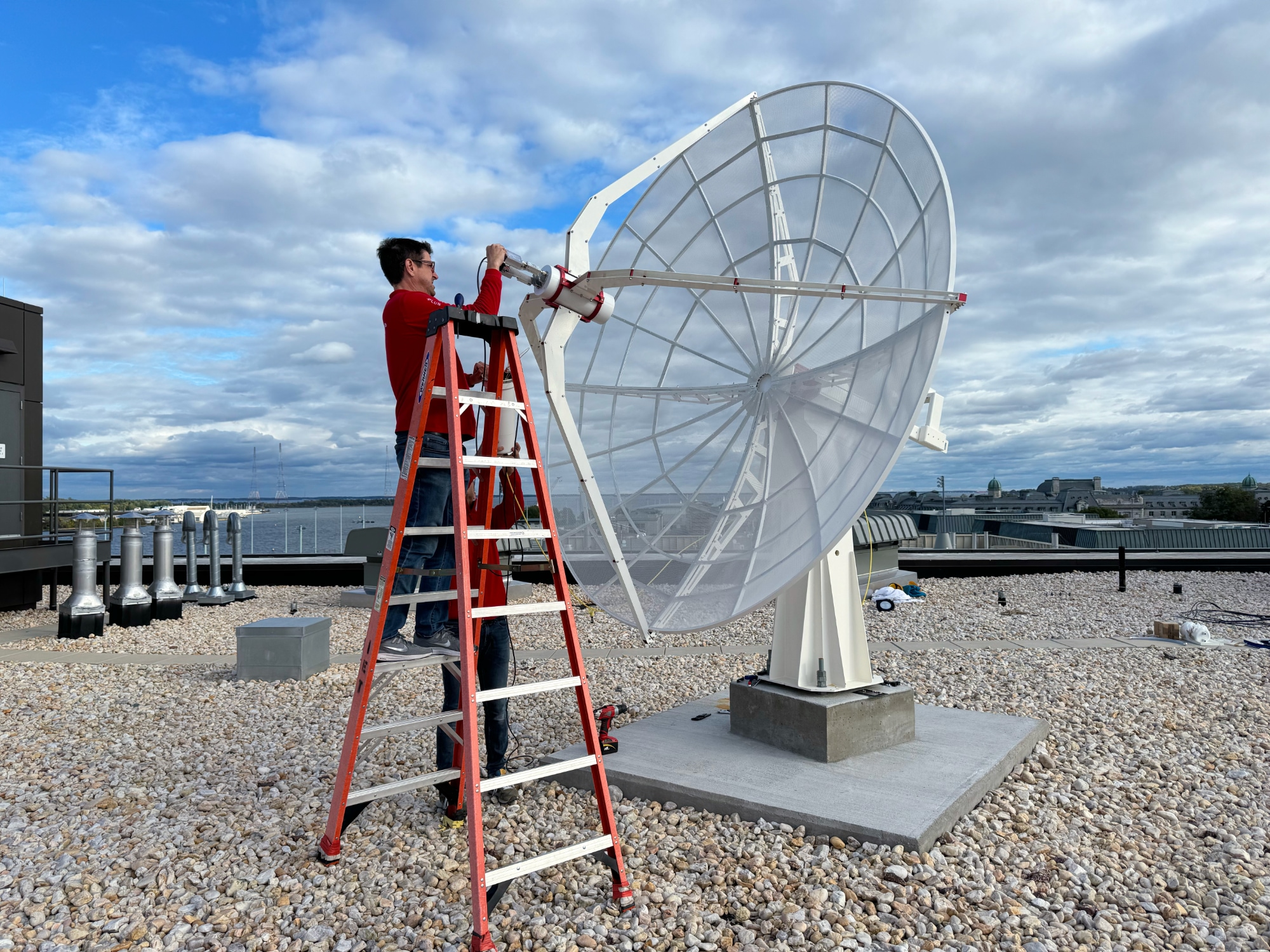
In the control room we installed, in a dedicated 19″ rack to provide a very good devices and cable management, the H142-One radio astronomy receiver that we specifically developer for SPIDER radio telescope, together with the RCPU-100 antenna control unit of SPIDER 300A, US-WIND ultrasonic wind sensor controller that automatically parks the antenna to the Zenith if wind exceed 50 km/h and Radio-over-Fiber controller for SPIDER radio telescopes.
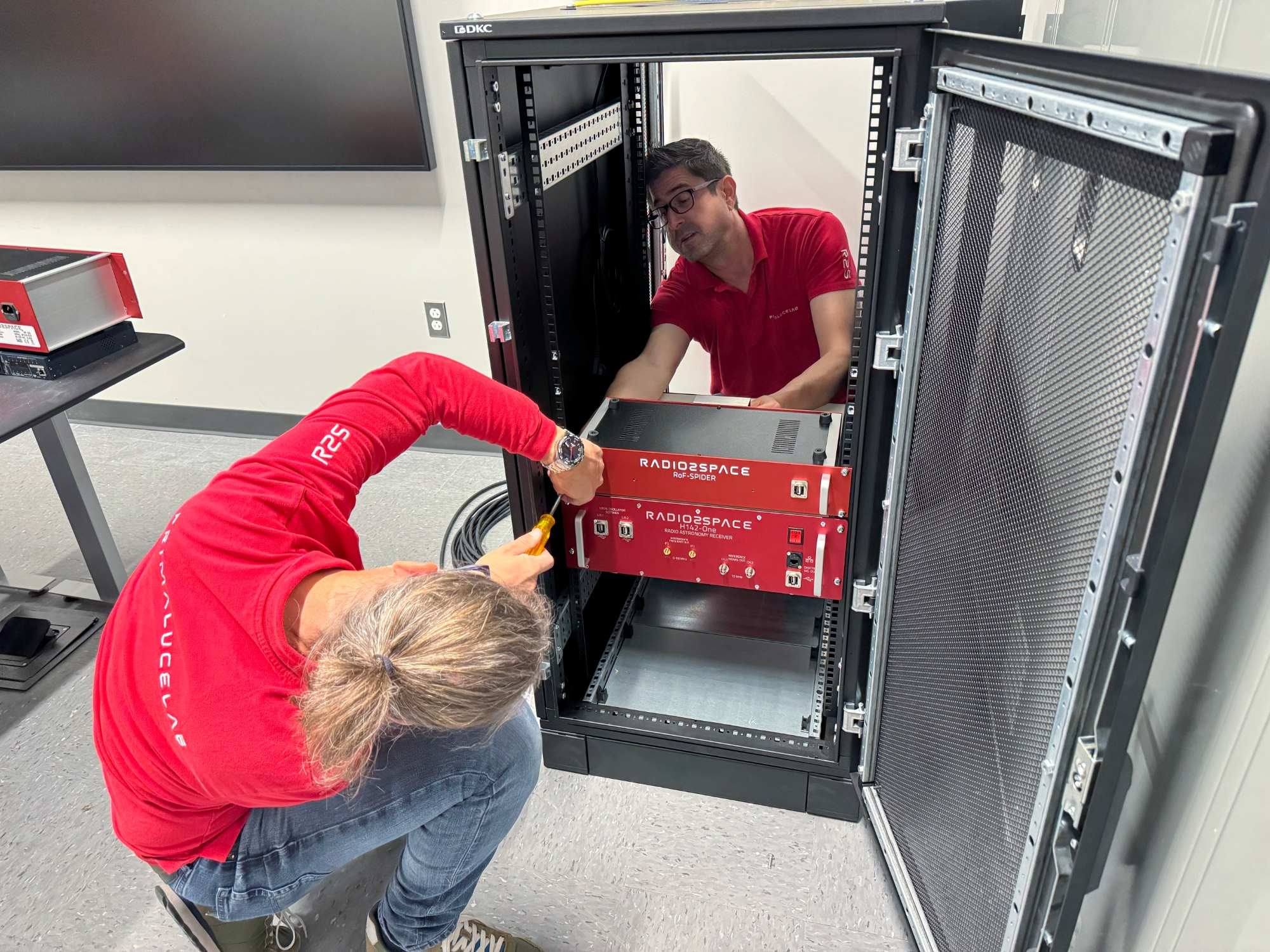
The installation has been completed by aligning the antenna to the sky radio sources, followed by a training session where our team introduced the main features of RadioUniversePRO software that we specifically developer to collect and process data captured by the SPIDER radio telescope. Undergraduates in the Astrophysics Major at U.S. Naval Academy will use the SPIDER 300A radio telescope for a variety of student projects including the kinematics of neutral hydrogen in the Milky Way galaxy and the mapping radio emissions from nebular regions in the Milky Way.
